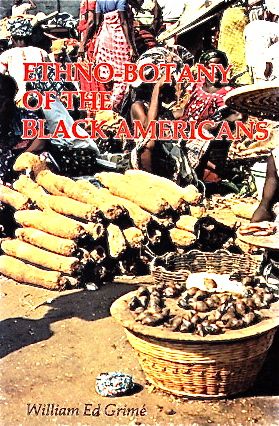By Fred Gardner
“EthnoBotany of the Black Americans” by William Ed Grimé is a well-researched, succinct book listing 242 plant species introduced and/or used by Black slaves in the Americas. Among them were okra, peanut, akee, cannabis, African palm, blackeyed peas, certain types of yam, and broad beans.
The uses to which these plants were put, according to a chart summarizing Grimé’s research, were: “Medicinal,” “Food,” “Household,” “Relaxation,” “Traps and Poisons,” “Clothing,” and “Superstitions and Religion.” Cannabis was introduced by slaves and used for medicine and relaxation!
There is some evidence that Brazil was the point of entry. “‘Diamba’ and ‘riamba’ are terms [for cannabis] used by West African negroes,” according to a scholar cited by Grimé, “and the same terms are used in Brazil.”
Another researcher found that cannabis use among slaves “was extremely prevalent in Brazil… It was cultivated chiefly in certain regions in the northern part where it was smoked in special pipes which passed the smoke through water or it was sometimes smoked in the form of a cigarette or cigar.”
When Kareem Abdul-Jabbar came to Diesel Books in Oakland to promote “On the Shoulders of Giants,” his book about the Harlem Renaissance, I brought him my copy of “Ethno-botany of the Black Americans” (Reference Publications, Algonac, MI, 1979; 237 Pages, $29.95).
Grimé’s text was republished in full in Folk Medicine in America Today by John Heinerman, PhD (Kensington Publishing, New York, 1971).




